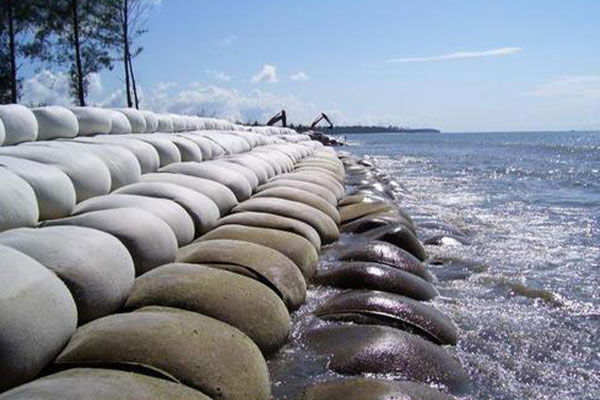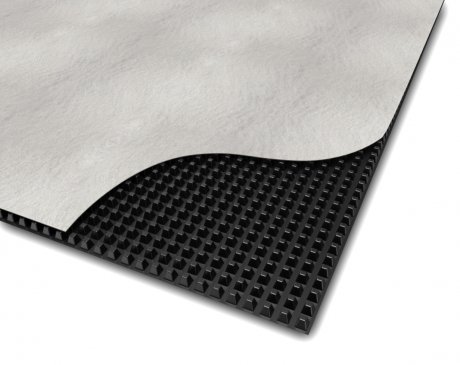Introduction to Geotextiles
When we think of construction and infrastructure projects, what constantly comes to our mind is concrete, steel and other heavy machinery. However, there is another major component that needs to be taken into consideration, and that is geotextiles. Geotextiles play an important role in modern construction and civil engineering, revolutionising the way we approach various projects. Let’s delve into the world of geotextiles, by exploring their definition, purpose, functions and the various benefits they offer.
What Are Geotextiles And What Is Their Purpose?
Geotextiles are permeable fabrics composed of synthetic materials that are designed to carry out particular tasks in projects related to soil and rock. Their main goal is to increase the general effectiveness and durability of environmental initiatives, transportation systems, and civil engineering constructions. Geotextiles also serve as reinforcements, separators, filters, and drainage components in combating issues with erosion control, water retention, and structural stability.
Types Of Geotextiles
There are various geotextile types, each created to meet the demands of a particular project. These consist of:
- Non-woven geotextiles: This type of geotextile is made by sewing or attaching synthetic fibres together. Geotextiles made of non-woven material are adaptable and have superior filtration and separation capabilities. These geotextiles are frequently employed in building roads, managing erosion, and installing drainage systems.
- Woven geotextiles: Woven geotextiles are made by weaving synthetic threads together, and they are known for their sturdiness and longevity. They frequently serve as reinforcing materials for retaining walls, road bases, and embankments, stabilising the soil in these structures.
- Knitted geotextiles: These types of geotextiles are created by interlacing yarn loops using knitted machines. Since these materials are adaptable and flexible, they can be used for a variety of tasks, such as soil stabilisation and erosion control.
- Composite geotextiles: Composite geotextiles are made by combining two or more different types of geotextiles with additional components like geomembranes or geogrids. These types of geotextiles help to improve the geotextile’s general functionality by meeting difficult project requirements.
Functions Of Geotextiles
Geotextiles offer four primary functions in civil engineering and construction projects. They are:
- Separation: Geotextiles maintain the integrity of each soil layer by preventing dirt from being mixed with another layer. The separation function prevents base materials from being contaminated by subgrade soils, which is vital in the construction of roads.
- Filtration: In terms of filtration, geotextiles are efficient filters that trap soil particles while letting water through. This function is crucial in drainage systems in order to avoid blockages and keep the water flowing.
- Reinforcement: Geotextiles act as a reinforcement, boosting the strength and stability of soil constructions by enhancing their ability to support more weight. This function is useful when constructing roadways, embankments, and retaining walls.
- Drainage: Geotextiles make it easier for surplus water to be effectively drained, preventing water buildup that can cause erosion or compromise structural integrity.
Benefits of Geotextiles
Numerous advantages come with the use of geotextiles in construction projects, including:
- Cost-effective: Geotextiles eliminate the need for expensive and time-consuming importing and exporting of vast quantities of natural resources.
- Environmental Protection: Geotextiles help to maintain a sustainable environment by avoiding soil erosion and fostering effective drainage.
- Enhanced Performance: Geotextiles increase the longevity and performance of structures by providing stability, reinforcement, and protection against numerous environmental conditions.
- Versatility: Due to the availability of a variety of geotextiles, they can be customised to meet the needs of a given project, resulting in the best possible outcomes.
- Time Savings: Geotextiles quicken the installation process and simplify soil preparation, minimising the need for considerable excavation.
- Durability: Geotextile-incorporated structures last longer as they are more stable and experience less wear and tear.
Wall Tag – Leading Geotextile Manufacturer And Supplier in Singapore
Are you looking for the most reliable geotextiles in Singapore? Then look no further than Wall Tag geotextiles. Wall Tag has served as one of the industry’s top producers and suppliers of geotextiles for more than 20 years. All of our esteemed clients are provided with the appropriate solution through our sales and service network. If you’re involved in construction, engineering, or environmental projects, consider integrating Wall Tag geotextile into your designs and let these innovative fabrics redefine the way you build and engineer for the future. To learn more about our products and services, visit our website.



